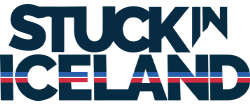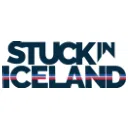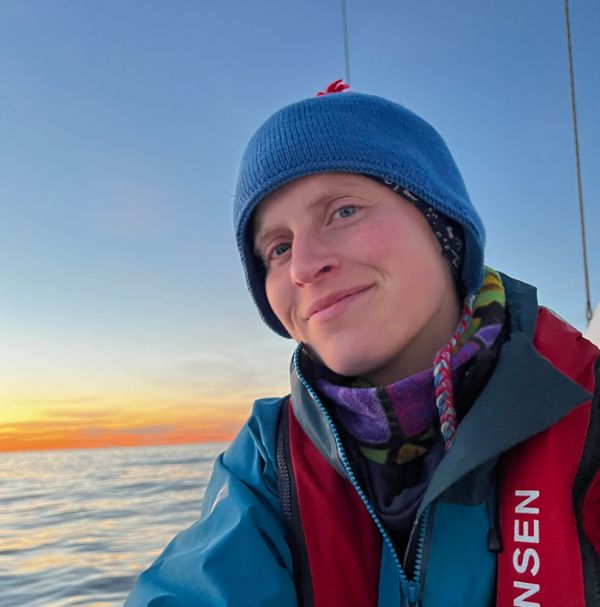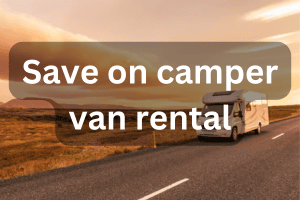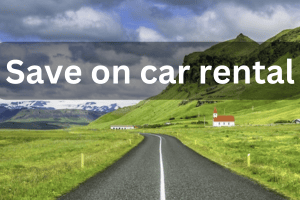Free and exclusive discount codes for hundreds of tours and & travel services in Iceland
Subscribe to instantly receive discount codes for tours, car rental, camper van rental, and outdoor clothing rental. Thank you! ❤️ Jon Heidar, Editor of Stuck in Iceland Travel MagazineMeet Katharina Kneip, a German artist whose life is a breathtaking blend of adventure and creativity. She now lives as a farmhand in Eyjafjörður, Iceland. However, Katharina is on a mission to ski, sail, and walk her way around the world. Her journey, which she calls Round:Motion, is not just a travel odyssey. It is an artistic performance and an exploration of the human connection to nature.
Katharina’s incredible journey began on the main square of Münster, Germany. Her journey has taken her through Denmark, Sweden, Norway, Svalbard, Greenland, and now Iceland. Along the way, she has kayaked across waters, braved Nordic winters, and skied through remote wildernesses. From Ísafjörður, she walked to Vatnsendi. This is a farm close to my hometown of Akureyri. Kathrina now spends her days tending cows, knitting, and swimming in icy waters while awaiting a sailboat to Canada. You could say that Katharina is now Stuck in Iceland!
Katharina documents her odyssey through photography and diary entries. She captures the vast landscapes she traverses and the profound inner journey of undertaking such an extraordinary challenge. Her story is one of resilience, artistic expression, and a deep commitment to sustainability. I spoke to Katharina to learn more about her travels, her life in Iceland, and her vision for Round Motion.
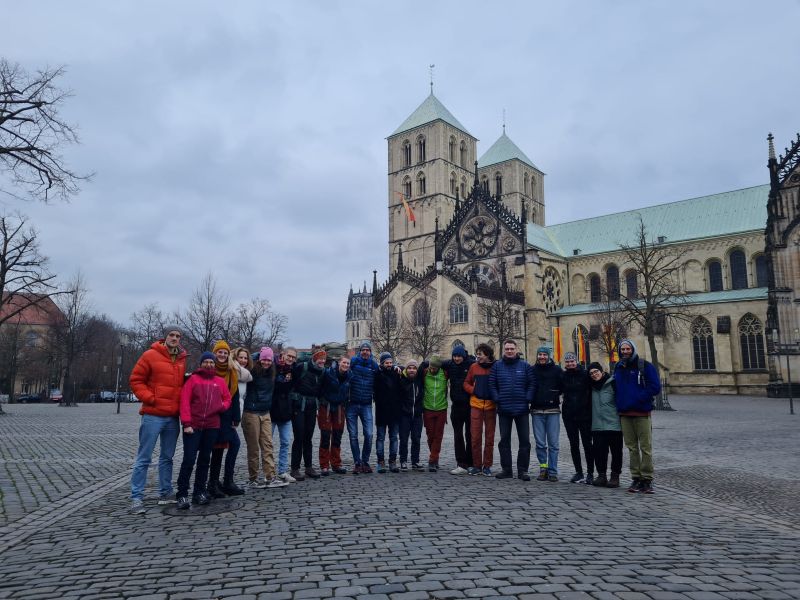
How did the concept of Round:Motion come to life?
In the beginning, it was a theoretical development. As an artist, I am, of course, always trying to develop my work and myself further. The so-called public space and the coming together of people in it in a possibly unusual way have played an increasingly important role in my work. Among other things, I tried to explore the boundaries between what is generally perceived as an adventure and what is categorized as art while using less and less material in my installations.
In retrospect, what remained the same, even though I thought I had developed a new work, was physical movement in the broadest sense in combination with an altered perception of time, being outside and experiencing one’s own emotional and physical limits, and that of what is labeled as culture and what is labeled as wild. Traveling around the world on foot and, therefore, so slowly that the time frame was not manageable for me was only logical if I wanted to develop something unknown, unmanageable, and experimental.
The global north, in particular, stands for “the last wilderness.” Numerous heroic adventure stories took place here. I am, of course, speaking here from the perspective of someone who grew up in Germany). Our perception of these regions and, thus, of nature is strongly characterized by these stories. In addition, of course, there are historical, geopolitical, and climate change aspects that shape our image and often stand in stark contrast to the image of “unspoiled nature.” This whole combination made sense to me conceptually, but of course, I am also personally fascinated by this part of our world in a way that cannot be fully explained in words.
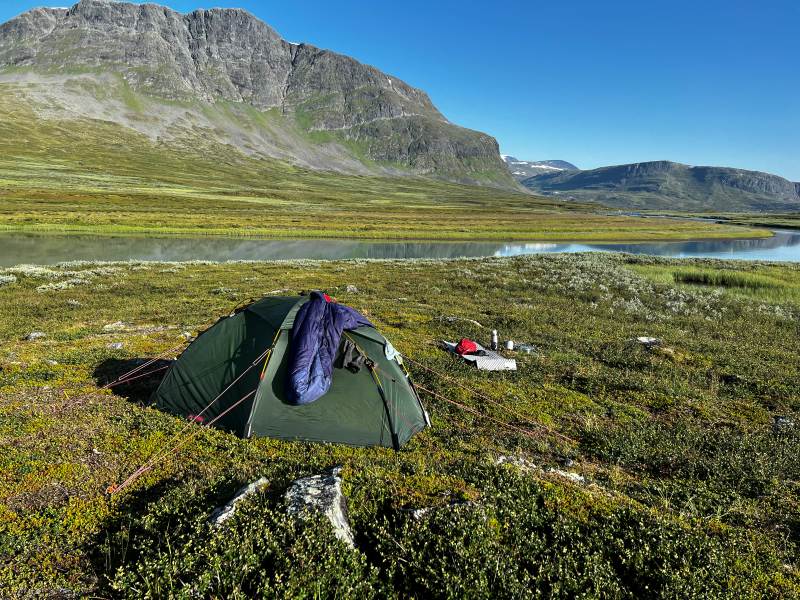
How do you approach each new phase of your journey, and what are the biggest challenges you’ve faced so far?
So far, I’ve always planned a little more precisely for about a year, writing to people along the way, looking for more precise maps, and thinking about what equipment I’ll need, for example. After that, I have a rough plan or ideas that I can then adapt more precisely when the time comes. There are different types of challenges – from a purely practical point of view. I’m currently facing one of the biggest challenges so far – finding a sailing boat to Canada. This is a particular challenge since it’s not entirely in my hands and nature’s, but I’m very dependent on someone taking me on board. This makes challenges while walking, for example, when I have to cross rivers, ski through snowstorms, etc., more manageable for me personally than currently writing wildly to people and having the feeling that everything is fizzling out somewhere in the universe.

Why do you avoid using airplanes during your travels?
There are, of course, environmental reasons for this, but it’s also an important part of the idea of traveling relatively slowly, really experiencing the distance, the natural elements, and everything that goes with it.
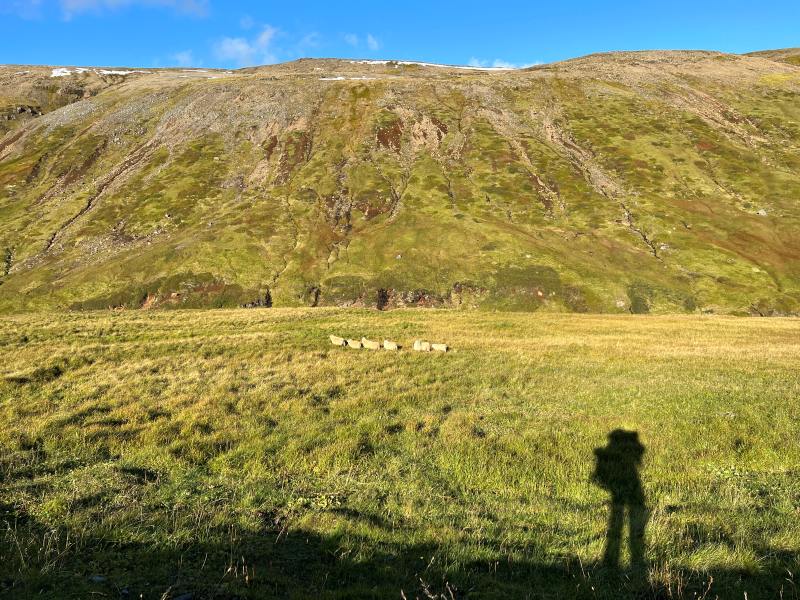
What role does Iceland play in your journey, and how has life at Vatnsendi shaped your experience?
When I roughly planned the tour for Round:Motion before the start, Iceland was rather categorized under: would be cool, but let’s see how it works out with sailing! I‘m very grateful that I can now be here and experience basically the following of big, historical footsteps and an incredible landscape. Here, I have time to really get an insight into everyday life and structures. Above all, to be a tiny little part of the area of life in our world that has ultimately fundamentally shaped nature since the beginning of humanity: agriculture and food production.
What is the most significant difference between being in Iceland and the Scandinavian countries you have already visited?
An important point for my personal feeling is that it’s an island I sailed to! (And unlike Denmark, you can’t see the other side either;-)) I think that makes a big difference when a country is not a “transit country” for any other country, plus, of course, a very different weather and landscape… and there is also no chance of leaving it without a boat.
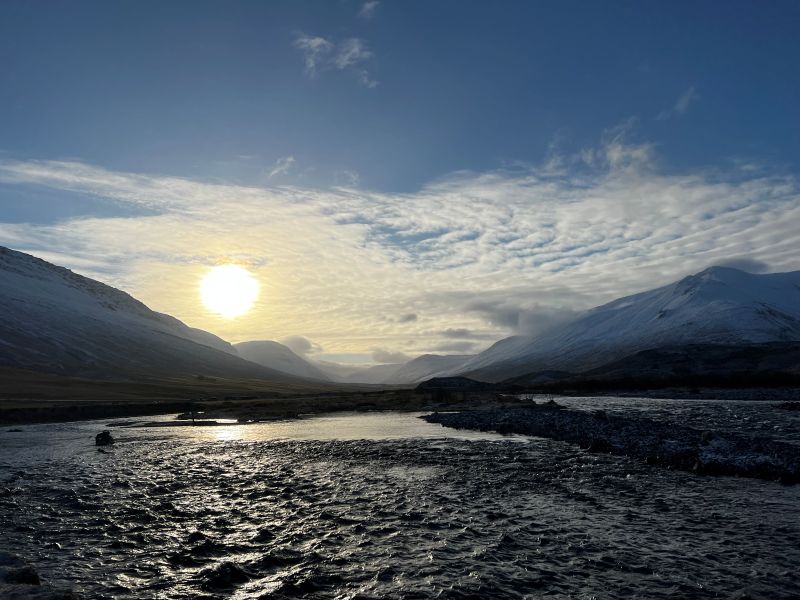
How do you balance being an artist and an adventurer?
I’m (actually) convinced that it’s not either-or. I’m also deeply influenced by the culture I come from, and I often think when I walk around, I should draw more, film more, or something like that. So I’m glad to have moments like here in Iceland where I have a place to be for a while, to realize what I’ve been thinking about while walking, to make new plans. Above all, to meet with people in the region and then meet them again…
Can you share a memorable moment from your journey that profoundly impacted you?
Even after all these kilometers, it’s still the first step in Münster. That was the first step of Round:Motion becoming real after a lot of theoretical preparation. Everything that was to happen from then on was to be part of Round:Motion.
What do you want to convey through your photography and diary entries?
I don’t forget so much and also have the moment to reflect while drawing or writing. But I also hope to be able to share this with others via social media, newsletters, exhibitions, books, etc. Furthermore, I look at nature – art – adventure from a new perspective, a new perspective. I also want to participate, to be open, to do and realize things together… Round:Motion is not only me walking around the earth. It is a small, own, interconnected universe that hopefully continues and develops even when my physical movement might be over.
How do you stay physically and mentally prepared for such a demanding expedition?
Physically, I always try to stay reasonably fit when I’m not traveling. I enjoy running, exploring the region on foot, skiing, or whatever else is available. As long as I have a basic level of fitness and experience with the weather, knowing the equipment and correctly assessing the geographical conditions is at least as important, if not more so when I’m physically on the way. The mental part comes along the way. I think it also helps that I’m convinced that what I’m doing makes sense. That carries me through many situations.
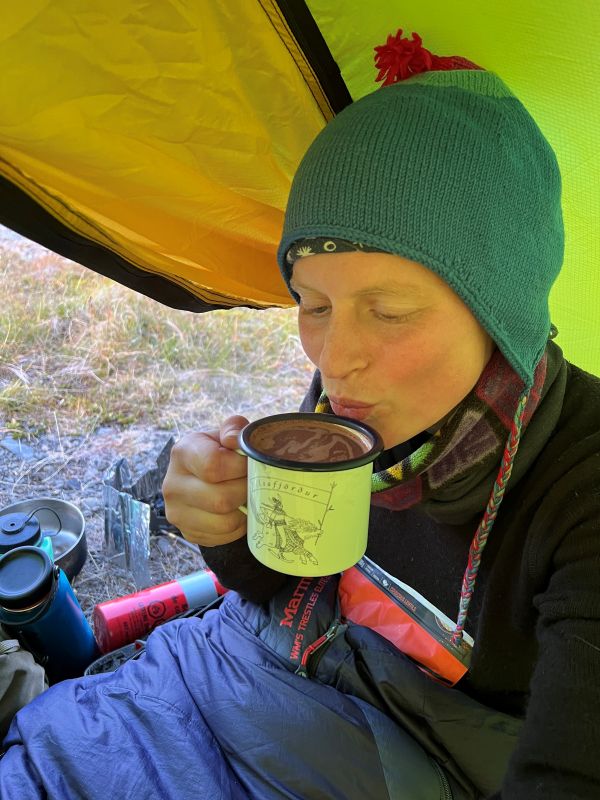
What advice would you give to someone considering a similarly unconventional adventure?
Do it! Think about what else might be particularly necessary. That includes learning something, saving money, applying for permits, coordinating with the family, etc., but then, above all, do it!
What’s next for you as you prepare to continue your journey toward Canada and beyond?
At the moment, I’m mainly thinking about how sailing to Canada can work out whether it would make sense to sail to West Greenland or not, and so on. That takes up a lot of my thoughts and energy. In Canada, it all depends on how long I’m allowed to stay. The route depends on that, and the final decision will only be made when I arrive in the harbor. I hope to walk relaxed through Canada to Alaska and sail from Alaska across the Bering Strait, but we’ll see what happens.
Follow this artistic adventure by Katherine Kneip on Instagram: @/_roundmotion_/
